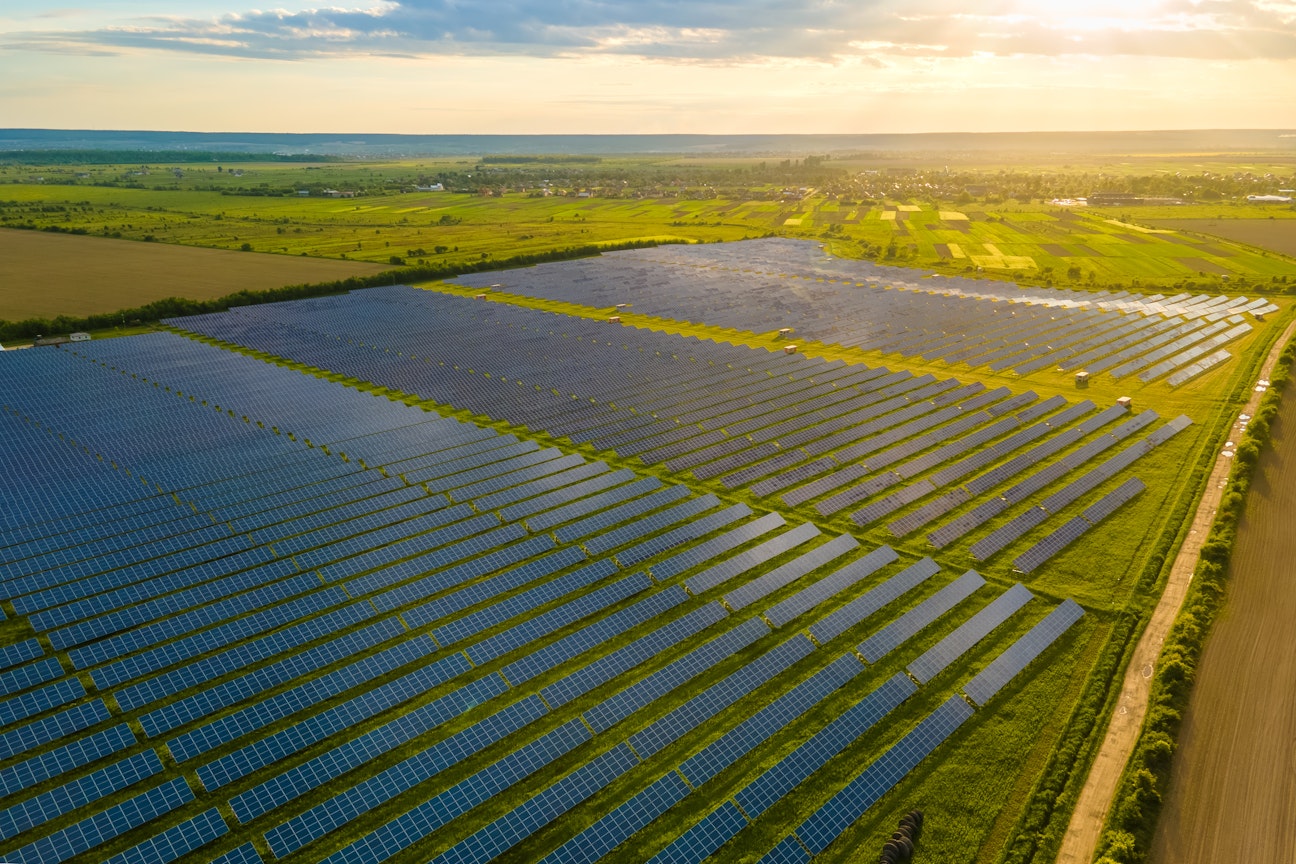- Solar energy blog
- The New Zealand solar boom
The New Zealand solar boom
Explore the rapid growth of solar power in New Zealand. Discover key industry players, future-focused projects, and how the nation is harnessing the sun for a greener tomorrow.


Laura Rodríguez
Business developer
Laura is a renewable and software industry sales professional, currently working at RatedPower as Sales Overlay in North America & Territory Manager Oceania. With a background in International Business and International Trade, Laura previously worked in the business strategy area in various companies as well as as a market analyst for the Government of Spain in Australia.
As the world pivots towards a greener future, more and more nations are bolstering their efforts to transition from fossil fuels to renewable energy sources. New Zealand is one country that has completely bought into the importance of this change, and they are experiencing a remarkable surge in solar energy adoption. Let's delve a little bit deeper into the Kiwis’ recent solar energy boom and take a look at exactly what they’ve been doing.

The New Zealand energy market
The energy market in New Zealand is both dynamic and evolving. They boast an impressively diversified grid, with hydropower and geothermal energy accounting for a significant portion of the nation's power supply. In 2021, over 80% of the country's energy was derived from green sources, underlining its commitment to renewable resources.
Despite lacking a concrete long-term strategy — which is slated for release in 2024 — New Zealand has laid out ambitious objectives with the nation aiming to generate 100% of its electricity from renewable sources by 2030. This goal necessitates substantial investments in the wind and solar energy sectors, both integral components to achieving another target they have, deriving half of total energy consumption from renewables by 2035.
As mentioned, a comprehensive plan is being created as we speak, but it hasn’t been without its challenges. Policy uncertainty coupled with the financial burden associated with the final stages of a complete green transition are hurdles that need to be overcome.
Another challenge lies in New Zealand’s heavy reliance on hydroelectric power. A lack of adequate rainfall could significantly disrupt this generation source, prompting the country to seek alternative solutions like large-scale battery storage systems. In response to these potential pitfalls, the government launched the NZ Battery Project in 2020, aimed at exploring viable options for energy storage.

The New Zealand solar market
The New Zealand solar market has seen its installed capacity increase threefold from 90 MW in 2018 to approximately 270 MW as of 2023. This substantial surge can be largely attributed to the rise of "distributed generation," where most solar installations directly feed into the local distribution network.
The distributed solar generation sector has experienced particularly robust growth and is projected to reach 535 MW by 2030, which is especially impressive given the country’s low population. This figure includes emerging solar farms, indicating a shift towards larger-scale solar energy production. Notably, grid-connected solar farm projects are currently under development, including farms with capacities of 39 MW and 32 MW respectively. Nevertheless, already announced projects in Kōwhai Park and Ruakākā surpass the projected growth.
Furthermore, there has been a noticeable uptick in interest in designing solar plants in New Zealand over the past year, supported by data from RatedPower that shows over 350 GW were simulated in the country by more than 20 different companies this year alone, a fivefold increase compared to the previous year.
However, it's worth noting that the intermittency of solar generation presents a challenge for New Zealand as it moves towards a renewable power system. Even with increased growth in solar, New Zealand will still need to make use of other renewable technologies for times when there’s a lack of sunlight.

Despite this obstacle, the utility sector is expected to dominate the solar market due to declining generation costs and upcoming initiatives promoting solar energy use. The previously mentioned target from the New Zealand government for renewables to make up to 95% of its total energy share by 2035 is set to provide a significant boost for investments in the solar industry.
Another consideration is that while these targets encourage growth in the solar market, they also promote competition from other renewable sources like wind, geothermal, and hydropower. These sectors may moderate the growth of the solar market due to their established presence in New Zealand.
Overall, despite facing a couple of different challenges, the New Zealand solar market shows promising potential for further expansion. With an expected compound annual growth rate (CAGR) of more than 3% between 2023-2028, it's clear that New Zealand's commitment to renewable energy is driving significant progress within its burgeoning solar sector.
Major players
Meridian Energy Ltd
In the New Zealand solar market, Meridian Energy Ltd stands as a significant player. With a strong commitment to renewable energy, Meridian contributes to decarbonization efforts and generates power exclusively from renewable sources like wind, water, and sunlight. They support the establishment of EV chargers nationwide, and they advocate for electrified process heating as an eco-friendly alternative to solid fuel methods.
BECA
One of the largest independent advisory, design, and engineering consultancy companies in the Asia-Pacific region, BECA employees over 3000 staff members in 25 offices all around the world. BECA have delivered on projects in 70 different countries spanning the full range of energy solutions, operating in both advisory, project management, and direct delivery capacities.
New Zealand Solar Power Ltd
New Zealand Solar Power Ltd provide solar power solutions to homes and businesses across New Zealand using high-quality panel and inverter products. They have a lot of experience across different types of projects, and their aim is for New Zealand to achieve 100% renewable energy, while at the same time prioritizing corporate social responsibility.
Looking to the future
Looking ahead, New Zealand has some exciting solar projects on the horizon. One such project is Christchurch Airport's ambitious plan to construct a massive solar farm, Kōwhai Park. The airport has selected Contact Energy and Lightsource BP — an international solar developer — as partners to deliver the first phase of this venture.
Kōwhai Park is expected to span 300 hectares and host approximately 300,000 solar panels. This installation could generate between 150-170MWp annually, sufficient to power roughly half of Christchurch's domestic flights. By harnessing this renewable energy source, the project aims to decarbonize aviation and meet the high-energy demands of various sectors. Kōwhai Park is also designed with future low and zero-emission aircraft in mind. Construction is scheduled to commence in 2024, pending a final investment decision.
Another exciting project involves Meridian Energy and Saft. The two companies are collaborating on New Zealand’s inaugural large-scale grid-connected battery energy storage system (BESS) at Ruakākā on North Island. Utilizing Saft's lithium-ion technology, the BESS will offer a substantial capacity of 100 MW power and 200 MWh storage.
This initiative aims to bolster grid stability amidst increasing reliance on intermittent renewables. Expected to be operational by late 2024, it will support local grid demands for approximately two hours at a time. This capability facilitates effective energy time-shifting and enhanced grid management.
The BESS project aligns seamlessly with New Zealand's transition towards a low-carbon economy. It holds potential economic benefits, too, with current estimates suggesting it could generate up to $35 million (USD) annually for Meridian. This project represents a crucial stride in fortifying grid stability while promoting more sustainable energy practices across New Zealand.
Ready to revolutionize your solar projects? Experience RatedPower solar design tool and take your solar planning to the next level. Get in touch today to find out more!
Latest stories
Related posts
Technology and engineering
Solar Power Technologies that rocked it in 2022
28 Oct, 21 | Updated 14 Nov, 22

Technology and engineering
Learn PV substation engineering and design automation with RatedPower
Do you know why and how a solar farm connects to the grid? RatedPower automatically generates the best solution for an interconnection facility and chooses between a switching and breaking station, a line to transformer substation or a single/double busbar substations.
2 Dec, 21

Market analysis
Breaking down solar farm costs: Free template inside
4 May, 21 | Updated 27 Sep, 21

- RatedPower
- Solar energy blog
- The New Zealand solar boom

